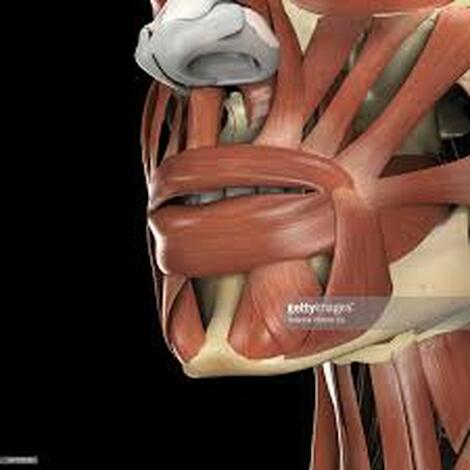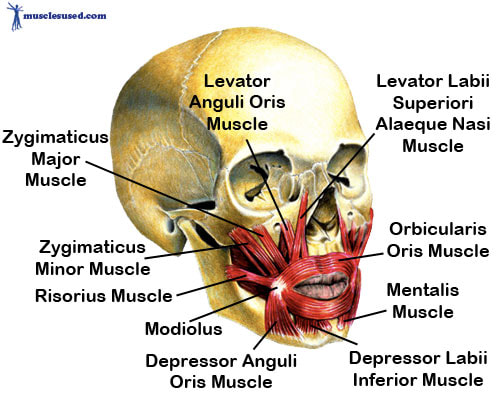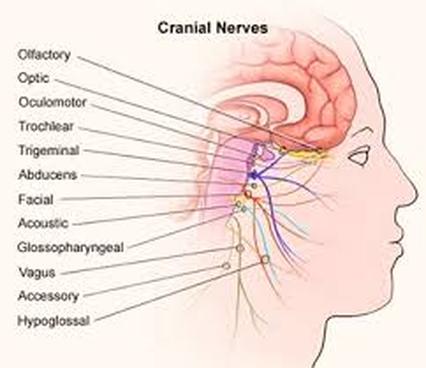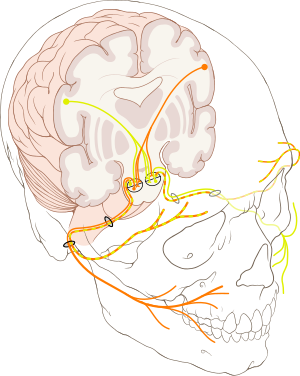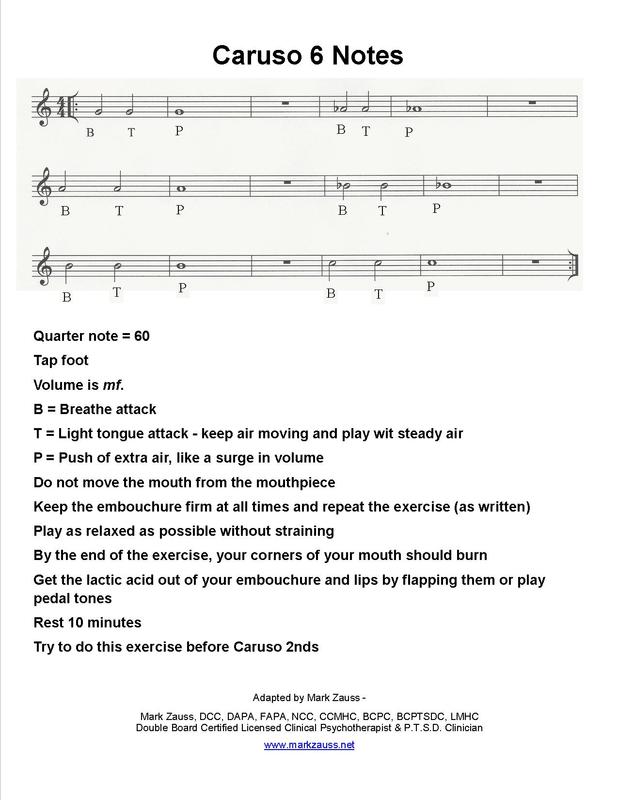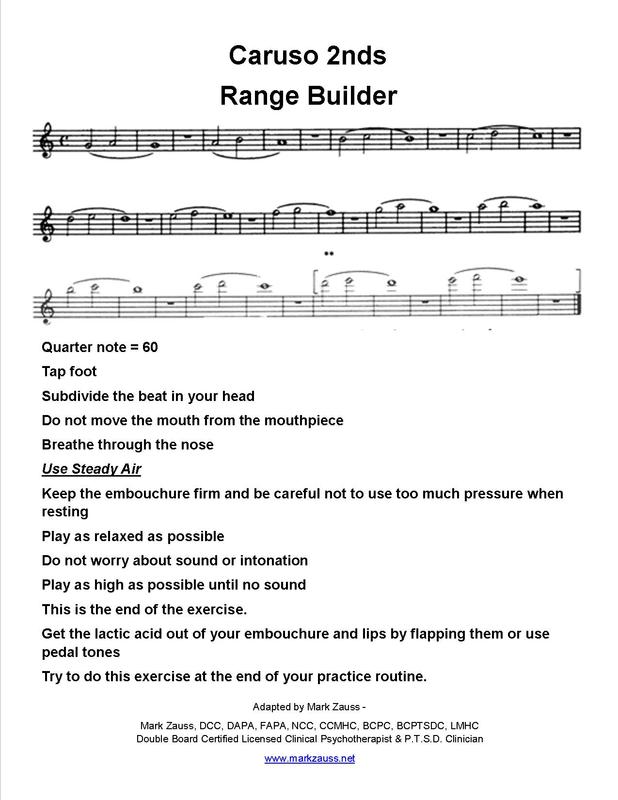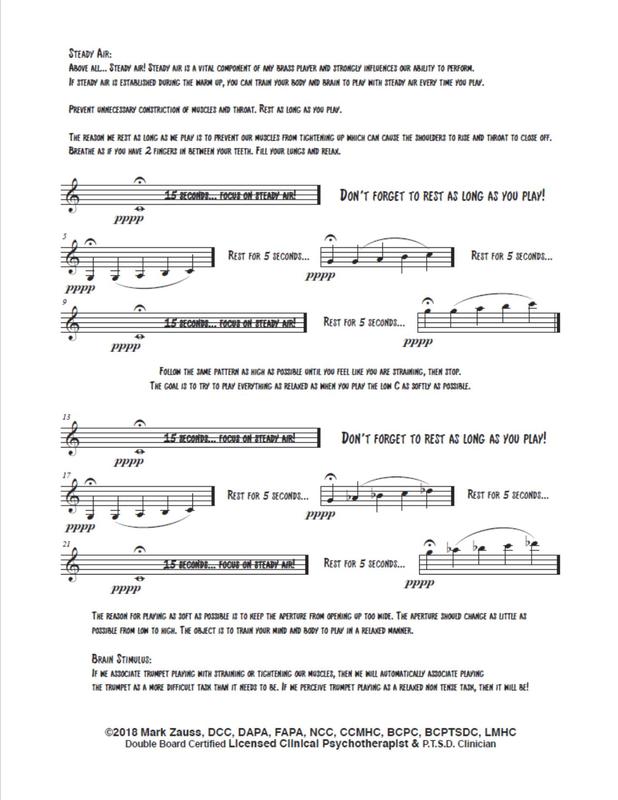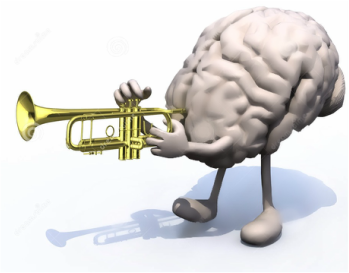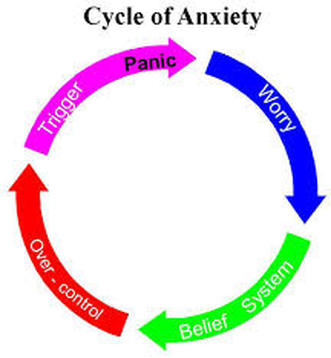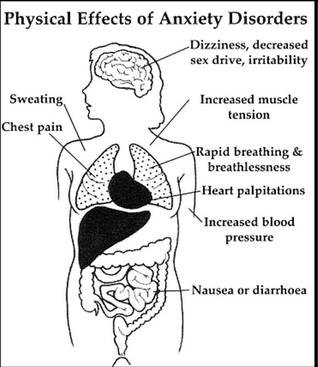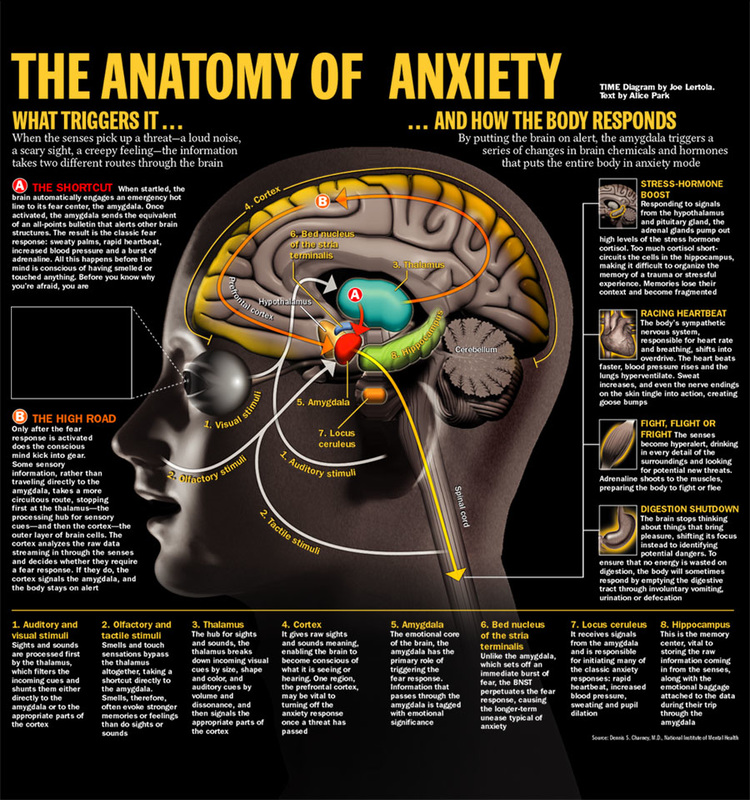The purpose of warming up - Establish Steady Air Focus the aperture Reinforce proper tongue placement Reinforce relaxed playing Clear your mind Click file below to Download PDF file of the Zauss Range Building exercise - (Free)
Risk of untreated Bruxism (Teeth Grinding) for brass players.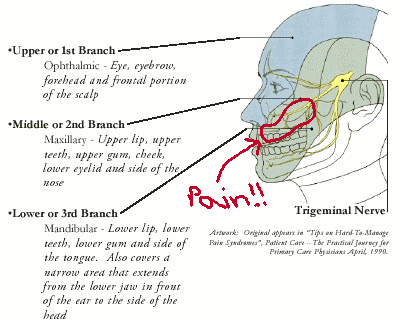 Bruxism, also known as teeth grinding, is known to affect over 40 million Americans and can have adverse effects for brass players such as lack of endurance, decreased range, muscle weakness, impaired articulation, flexibility issues, facial pain, hearing problems, migraine headaches and anxiety. Brass players may experience difficulty playing due to nerve and or muscle pain. These issues are commonly referred to by Doctors as orofacial problems which include craniomandibular dysfunctions (CMD), often called temporomandibular disorders (TMD). According to Oxford Academic, orofacial symptoms can be caused or exacerbated by grinding your teeth - bruxism. This article will address the basic symptoms of bruxism, tips for diagnosis, how to seek treatment. Also included is a video from 2 physical therapists which describes how to self massage the facial muscles and relieve the symptoms associated with TMD. Symptoms: The symptoms of bruxism can include: lack of endurance, decrease in range, facial pain, muscle weakness and fatigue especially in the muscles associated with the embouchure. If untreated, pain can worsen after playing and cause a variety of symptoms. Middle ear pressure changes affecting how you hear yourself According to Fletcher, NH Tarnopolsky, Bruxism (also known as teeth grinding) can also adversely effect the pressure in the middle ear which can affect the how you hear the sound coming out of your instrument and cause you to over blow. Over blowing can then lead to embouchure changes and how you shape your throat and mouth cavity when you play. If you have ever tried to play your instrument with a head cold, then you would have experienced some of the difficulties associated with pressure changes in your middle ear. Difficultly hearing can adversely effect how we articulate notes cleanly and tongue placement. Over blowing can lead to playing with too much pressure which can cause additional teeth pain and increased pain in the mandibular and maxillary areas of the face associated with the temporomandibular joint. The adverse effects of bruxism may develop slowly over time and the brass player may not be aware of the cause of his or symptoms. Long Term effects: The psychological effects of performing with facial pain can lead to anxiety, lack of confidence and undue stress which further exacerbates the condition. According to Dr. Ressman, the relationship between bruxism and CMD (craniomandibular dysfunctions) with stress is well known. According to Schü B Kanzlivius, Peroz, evidence also supports a correlation between anxiety/stage fright with orofacial pain. Stressful life events can also increase the severity of bruxism (teeth grinding). Death in the family, financial difficulty and relationship issues also increase the severity and intensity of teeth grinding. Bruxism often occurs subconsciously which means we are not aware we are grinding our teeth. These subconscious anxiety responses can manifest while we sleep and dream which can cause more pronounced teeth grinding. According to NCBI, sleep bruxism was reported by 8.6 % of the population. Sleep bruxism can cause muscle fatigue upon awakening and long before we play a note in the instrument. This would result in decreased endurance and difficulty performing because of increased anxiety about one’s ability to play. Another obvious symptom is damage to your teeth. How do you know if you have Bruxism? The most accurate way to diagnose Bruxism is to see your dentist. The dentist can look at the wear of your teeth and determine if you have bruxism. Below is a chart which indicates the physical symptoms of Bruxism. 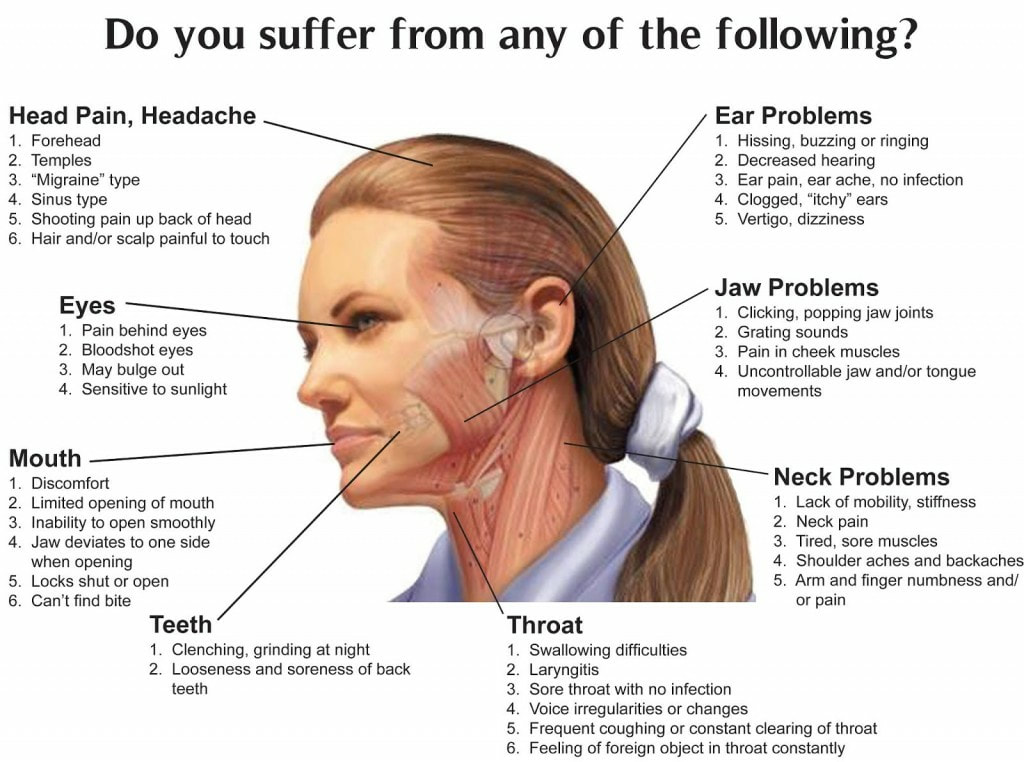 Bruxism treatment:
The most popular treatment for Bruxism is a custom made mouth guard created by a Dentist – DMD or DDS. This typically resolves symptoms in 70% of those diagnosed with Bruxism. Obtaining a mouth guard is painless and easy. The dentist creates an impression of your teeth by placing an clay like non toxic semi-solid material in dental impression tray which is designed to roughly fit over the dental arches. You then bite down on the tray and the material sets to become an elastic solid (usually takes a few minutes depending upon the material), leaving an imprint of person's dentition and surrounding structures of oral cavity. You are then directed by the dentist when and how to wear the impression over your teeth, often times before going to sleep. Another way to self treat bruxism is by massaging the pressure points. Below is a link to a Youtube video of two physical therapists that explain how to alleviate facial pain. https://youtu.be/7b73yE0U2t0 Conclusion. Bruxism is an issue to take seriously and should be evaluated by a dentist. Treatment is usually not difficult or expensive and can be managed by a mouth guard from your dentist along with basic massage techniques. The benefits of treatment include significantly decreasing the harmful effects of teeth grinding, preserving existing teeth structure, keeping the teeth from cracking or wearing down, and prevention of further craniomandibular and temporomandibular disorders. Sources: Oxford Academic, Symptoms of craniomandibular dysfunction in professional orchestra musicians A. Steinmetz A. Zeh K. S. Delank I. Peroz Sleep. 2016 Nov 1; 39(11): 2049–2056. Published online 2016 Nov 1. doi:10.5665/sleep.6242 https://www.ncbi.nlm.nih.gov/pmc/articles/PMC5070759/ Khoury S, Carra MC, Huynh N, Montplaisir J, Lavigne GJ. Sleep bruxism-tooth grinding prevalence, characteristics and familial aggregation: a large cross-sectional survey and polysomnographic validation. SLEEP 2016;39(11):2049–2056. Reissmann DR John, MT Schierz O Seedorf H Doering S. Stress-related adaptive versus maladaptive coping and temporomandibular disorder pain J Orofac Pain 2012; 26: 181 -190. Schü B Kanzlivius, Peroz, Stress, coping, and craniomandibular disorders. Schmerz 2006; 20: 490 –497. Disclaimer: This is blog entry is not for the purpose of diagnosis or treatment of a medical condition. Please consult your Dentist or physician to determine if you have any of the symptoms listed above.
Chops feel beat up, tired and fatigued? Must read this!
Basic neurological explanation which explains fatigue.
Thank you to Matt Burke - The facial nerve (7th cranial nerve) that controls the muscles of the embouchure (and indeed most of the muscles of facial expression), not the trigeminal nerve. The trigeminal nerve is a largely a sensory nerve, with a motor branch that serves the muscles involved in chewing. Just to focus in a little more, the trigeminal nerve is responsible for most of the sensations within the face, or impulses travelling TO the brain, whereas the facial nerve is 100% motor in function, directing impulses FROM the brain to move the muscles of the face and head.
The facial nerve is outlined in orange below.
Range Building Exercise - Play with less effort in the upper register. PDF & Video instruction.1/21/2018 This blog entry is a basic range building exercise is included as well as a discussion about the psychological and physiological processes that may help reduce tenseness when playing in the upper register. This includes a video demonstration and free downloadable PDF file. Why it's so important to not play tense. As a clinical psychotherapist and professional trumpet player, I discovered that when trumpet players become tense, the tension in their shoulders and the back of neck significantly increases which effects our ability to perform. Tension can adversely impact effect our flexibility, pitch, accuracy and range. When the muscles in the back of the neck become tense, the parasympathetic nerves that run adjacent to the cranial nerves can become inflamed. This inflammation can affect the trigeminal nerves in the face to become fatigued which can decrease endurance. The parasympathetic nerves which affect the middle ear can also be impacted by causing the pressure to change in the middle ear. This can cause us not to be able to hear as well when we become tense. When we cannot hear as well, we have the tendency to over blow which can cause changes in the aperture. These are only a few reasons that explain the importance of why we should practice how not to be tense. This method includes specific examples of how to decrease the tenseness in our body and improve range by playing in a relaxed manner. This method is not comprehensive, but shows the basic technique of how to play in a non tense manner.
Break the cycle: Be conscious of your tenseness or it will continue. Playing tense can form into a habit and actually feel normal. Awareness is the first step towards change. Once you discover what being tense means you can take charge and apply the tools you learn to play in a relaxed manner. Every one is different but it typically takes about 30 days to develop a new positive habit of playing relaxed. If someone has been playing tense for a long time, they can subconsciously become tense when only thinking of the trumpet. It takes time to re-lean a new habit and undo the old one. Eventually the new habit will sink in and playing becomes easier. Steady Air: Above all – Steady air. Steady air is a vital component of any brass player and strongly influences our ability to perform. If steady air is established during the warm up, you can train your body and brain to play with steady air every time you play. The exercise in this blog focuses on steady air. Prevent unnecessary constriction of muscles and throat. Rest as long as you play. The reason we rest as long as we play is to prevent our muscles from tightening up which can cause the shoulders to rise and throat to close off. Breathe as if you have 2 fingers in between your teeth. Fill your lungs and relax. Focus on steady air - always. Click file below to Download PDF file of the Zauss Range Building exercise - (Free)
Range Building exercise. Click Image Below for PDF file
How to play from low to high with minimal embouchure change and how this is directly related to the Yoga Breath. Video demonstration above.
As trumpet players, we strive to gain flexibility when playing from low to high with minimal change to the aperture and embouchure. The likely obstacle many trumpet players experience is a slight overcompensation in the throat and muscles in the mouth/tongue. The tendency is to tighten up the throat which causes air restriction. This could cause an unnecessary hindrance when trying to improve flexibility. Yoga Breath The yoga breath may seem cumbersome and not practicable at first. We all have the tendency to overdue the Yoga breath at first. As you practice this it should feel more comfortable and relaxed. Key components: The throat should remain as opened as possible at all times to avoid air constriction which results in loss of flexibility and range. Place two fingers in your mouth and breathe in as deep as possible. This should prompt you to keep your throat more open and avoid air restriction. Fill up the belly first and then the upper part of the lungs. After your lungs are filled with air, your shoulder will raise up, then relax the shoulders. Try this again and hold the air in the lungs for about 10 seconds. Repeat the breathing sequence again and this time with about 75% as much air as you took in the first time. Hold out a low C as soft as possible for 20 seconds with your air as steady as you can. Practice this same breath and play a low B, Bb, A, Ab, G and F#. The feeling you get when you play a low C softly is what you want playing the trumpet to feel like every time you play. This will help the brain establish that trumpet playing is a relaxed procedure rather than a tense one. The more you play trumpet in a relaxed manner, the easier it will become. The position of the throat from breathing deeply should always remain open as if we were playing a low note. The object is to keep the throat open as possible at all times. When we play high, some resistance is necessary in other to increase air speed. However, we don't want the resistance to be created from closing off the throat. We try to avoid closing the throat off in an attempt to increase air speed. The resistance will most likely come from the tongue placement being slightly arched in the back. The aperture would be wider when playing low notes and more narrow as you play higher. This is only a brief explanation and clarification and feel free to contact me for a private online lesson for more comprehensive instruction. Mark Zauss, DCC, DAPA, FAPA, NCC, CCMHC, BCPC, BCPTSDC, LMHC Double Board Certified Licensed Clinical Psychotherapist & P.T.S.D. Clinician Trumpet Artist for the Schilke Music Corporation (Trumpet) Trumpet Artist for the Warburton Music Corporation (Mouthpiece) www.markzauss.net Steady air and relaxed breathing can increase range, efficiency and power. This can be accomplished by playing in the upper register in the same relaxed manner as you do in the lower register. There are simple and effective exercises included in this article which shows how to integrate steady relaxed air into trumpet playing.
Diaphragmatic Breathing (Abdominal Breathing) We naturally breathe correctly while sleeping and mainly with our diaphragm. This is referred to as Diaphragmatic Breathing (Abdominal Breathing). Diaphragmatic breathing helps maintain the ideal level of oxygen in our blood (about 98-99%) so we can feel better and our ability to perform tasks is enhanced. We will also remain relaxed so that we do not become tense when playing in the upper register. Exercise 1 Here is an exercise to examine how you breathe. Lay on your back, place a few books on your stomach. Try to lift the books up about an inch each time you inhale and relax to exhale (the books will go down when you relax to exhale). You will notice that your rib cage does not expand during inhalations. This exercise can be repeated for about 3-5 minutes. This will help your brain and body establish the process of Diaphragmatic Breathing. Exercise 2 Next, sit upright or stand. Make sure your back is straight and no constriction is taking place. Breathe in as deeply as possible first filing the stomach and then filling the lungs with air from the bottom to the top. You will notice the upper chest and ribs will also fill up with air. Hold the air in you lungs and take another sip of air, then another. You should feel your shoulders raise. While still holding the air, relax your shoulders and you should feel your ribs stretch slightly. Release the air slowly. Now we should ask, how does this relate to brass playing? What is the appropriate amount of air to take in? The answer is found from practicing how to breathe while practicing the exercise below. Exercise 3 Breathe in the manner above, then hold out a low C below the staff (Trumpet) as long as possible and as SOFT AS POSSIBLE and Try to keep the air as steady (and soft) as possible for each note. Rest about 30 seconds between each note. Repeat playing B, Bb, A, Ab, G and Gb (F#). As you progress through the exercise you will notice the tone should become more steady and you will feel more relaxed. The relaxed feeling you experience is what you should be striving to feel like anytime you play trumpet. Relaxed and steady air is the key to upper register playing. You will discover how much air to use as you practice the exercise. The purpose of this exercise is to emulate or duplicate the feeling you get playing low with playing in the upper register (or as close as possible). Always focus on steady air above all else.
Steady air helps you play passages with increased efficiency and with an even sound. Breathing slower and in a more relaxed manner has a positive benefit by using your air more efficiently, increase your ability to concentrate, decrease head rushes, and augment your ability to focus. The embouchure and muscles associated with brass playing are able to become more synchronized which uses less energy and increases endurance, range, flexibility and efficiency. When to expect results. The brain has a complex system of neruotransmitters which send synchronized signals throughout the body. When we learn a new task or activity, our brains automatically strive to gain a sense of mastery of the task. As this occurs, new neural connections are created in the brain and usually develop significantly approximately every 30 days. The longer the task is practiced, the better you will get at the task. However, it is important to remember to rest frequently to avoid becoming tense or tired. Practice how to get better at relaxing when playing the trumpet. Rest frequently to avoid becoming tense or tired. If you practice becoming tense or tired and fatigued, your brain will associate playing the trumpet with being tired and fatigued. Rest frequently before you become tired. Inevitably you will become fatigued at some point. Be sure to play long tones or buzz just the mouthpiece and focus on soft and steady air. The lower notes below the staff such as the exercise described above seem to help. For some people, middle G in the staff also seems to be the most effective. The reason for this exercise is to associate trumpet playing with being relaxed. Your brain will automatically associate the trumpet with however you feel about it when you play it. Conclusion: The more relaxed you are when you play, the easier the process of playing trumpet will be. Remember to think relaxed when you perform in the upper register just as you would if you were playing in the lower register. This is only a basic sample of some of the concepts related to upper register playing. Other components such as the throat, tongue placement, aperture and embouchure also play a crucial role in upper register playing. For private lessons via Skype, contact me. Mark Zauss, DCC, DAPA, FAPA, NCC, BCPC, CCHMC, BCPTSDC, LMHC Markzauss.net e mail: [email protected] Disclaimer: This is blog entry is not for the purpose of diagnosis or treatment of a medical condition. Please consult your physician if you experience a more serious condition or symptoms. 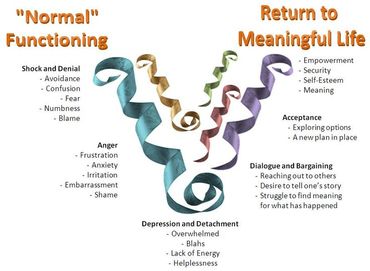 This blog entry is in response to the individuals who lost their life in the shooting at Pulse night club. I give my genuine condolences and sincere thoughts and prayers to the soles in the club and their families. Recently I have been calling in to the radio station, 96.5 WDBO and commenting under the name of "Mark the therapist" in an attempt to offer help and guidance. Many, if not all will be adversely affected by this tragedy and will go through the grief process. A basic understanding of the stages of grief along with therapeutic suggestions (what to do) will be described in this entry. 5 Stages of Grief: There are 5 stages of grief that are denial, anger, bargaining, depression and acceptance. These emotions and thoughts are not experiences in any general order. It is completely normal to feel any one of these emotions at any time especially during the early stages of grief. The emotions associated with grief and loss is universal to all walks of life. Below is a brief description of each with basic examples. Denial: Denial is often one of the first emotions experienced during grief and the brains way of attempting to cope with the new reality of loss. This includes feelings of disbelief, trying to rationalize what happened, and often isolating from others. Sometimes one will feel that the deceased person will return or is still with us. This is also completely normal in the beginning stages of grief and the brain’s way of trying to cope. Bargaining: Similar to denial, this includes feelings of disbelief, trying to rationalize what happened, and often blocking the memories of the traumatic event. Thoughts like: “If only I had told my friend not to go”, “If had just called him a few minutes earlier.” Anger: Anger and depression are one in the same – just in different forms. The anger towards the shooter is inevitable. Because we cannot directly communicate with shooter, we experience anger towards others, frustration and confusion. Many people experience an increase in anger at work, while driving or with loved ones. Depression: Depression is often repressed anger. Depression also includes the feeling of pure loss and trying to accept that we will never see the person again. This feelings such as a pit in the stomach, thoughts of remorse, regret and sometimes guilt. If you find that you or your loved ones start to isolate from others for more than a few hours at time, consider seeking help. Acceptance: This is the stage when our brain starts to cope and understand what has happened. We continue to feel the stages of grief, but to a much lesser affect. The experience of loss never completely goes away, it just becomes more manageable. How long does it take to feel better? – Everyone is different and there is no universal answer. Generally the outcome depends on what you do after the loss and you coping skills. Try to engage with others, share your emotions and thoughts with them. Your brain will be able to make sense of what happened sooner that it would if you isolated yourself. Usually, the brain takes about 30 days to make new neural connections and “feel different”. The first few days to two weeks are the hardest although many begin to start feeling a little better after about a week. Is it normal if I just start crying out of no where? Absolutely – Yes. Emotions and pain build up inside us and we cannot always control when our brain decides to purge our emotions. Crying is necessary and don’t fight it. What else can I do to help myself grieve? Create your own positive meaning of the lives lost. Remember the people who lost their lives in appositive way and the positive impact their loss had on the community. Reframe the loss in a way that brings a positive view of what happened. Take a break from the grieving. It’s ok to watch a movie and escape for a few hours. Your grief will be there when you return to it. The brain needs a break from the grief to heal just like your muscles need to rest. When should I seek counseling? When you feel overwhelmed and notice an excess of anger, anxiety and depression. You may notice you have difficulty sleeping or feel anxious almost all the time. If this happens more than a few weeks, seek counseling. Remember, you don’t deserve to feel bad and it is your right as a human being to feel good. Who do I see for help? For talk therapy without medications, you would seek a licensed mental health counselor. The letters after the clinician’s name would look like this: LMHC, LPC, PSYD, LCSW. Contact your insurance company or look a for therapist who accepts self pay. I also offer online therapy via Skype, self pay only. Disclaimer: This is blog entry is not for the purpose of diagnosis or treatment of a medical condition. Please consult your physician if you experience a more serious condition or symptoms. 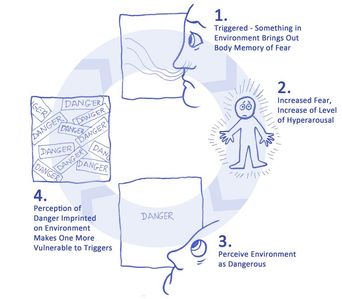 Click image to enlarge, Click image to enlarge, The purpose of this blog entry is to gain further perspective into the automated psychological responses of pre-anticipatory anxiety and performance. Many performers experience a derogatory inner voice which may include “what if”statements such as, what if I make a mistake, what would others think?’ Other inner thoughts may include, “I am not good enough, I can’t this, etc..” Understanding how these thoughts can cause psychological stress will be clarified in this blog entry in relation to neurochemical and physical responses. With understanding, awareness and clarity, it is possible to overcome and effectively manage stress and pre-anticipatory anxiety related to performance. Here are a few basic examples of a psychological response. If you have ever almost been in a car accident and experience your body become tense, rapid heart rate, sweating, even dizziness. This response is involuntary and occurs because the brain perceives you are in imminent danger. Another example is if you have experienced fear while watching a horror movie. Although you are not in actual danger during the horror movie, the body and brain perceives fear the same. The primitive response part of the brain cannot tell the difference between actual reality and perceived reality and therefore cannot determine if you are in actual danger or perceived danger. The same psychological response may occur (rapid heart rate, sweating, tense muscles). This is directly related to performance and here’s why. An upcoming performance can induce fear by thinking false beliefs which include fear of making a mistake, being ridiculed by others, or being exposed as a fraud. This can lead to a physical and psychological response. Your body and brain cannot tell the difference between actual danger and perceived danger, therefore an automatic psychological response may occur. Neurotransmitter, Endocrine, and Adrenal responses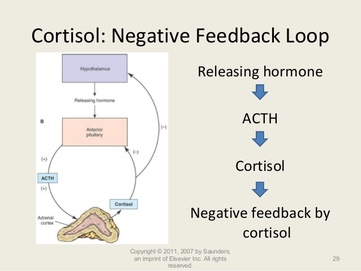 Click Image to enlarge Click Image to enlarge The physical and neurochemical response includes an over activation of a stress hormone called cortisol. Cortisol is responsible for 3 major functions which are designed to protect our bodies and keep us alive. These include raising blood pressure, increasing blood sugar or raising glucose levels, slowing down our immune system and increasing inflammation. The production is a natural reaction for the purpose of providing more energy dedicated to surviving. Cortisol influences sleep, circulation, heart rate, digestion, glucose levels, behavior and mood, digestion and many more functions. Cortisol is released by the outer cortex (outer layer) of the adrenal glands which are triangle shaped endocrine glands on top of each kidney. When the adrenal glands respond naturally (not in a state of stress) the adrenal glands would produce increased levels of cortisol in the morning to help us wake up and decreasing cortisol levels throughout the day. When reacting to stress, the cortisol level would increase as long as stress is prevalent. This primal system is called the hypothalamic-pituitary-adrenal axis and this is how it works. When stress is experienced, the hypothalamus gland in the brain tells the pituitary gland, also in the brain, that danger is present. The pituitary gland sends hormones (called ACTH) to the endocrine glands (on top of the kidneys) And tells the see each glands to start making cortisol. This happens automatically before we’re are aware of it! This alerts us that we may be in danger and we may need to either run (Flight), fight, or play dead (Faint). This experience is necessary if your being attached, but not helpful at all if you’re trying to perform and stay relaxed. Additional tools to manage performance anxiety How to do we manage this stress and what can we do about it? The answer is to practice being in a stressful performance situation. Try to find a stage and simulate the conditions of an actual performance. When doctors learn to operate, they first practice of with cadavers rather than on a live person. Acknowledge your fears increased heart rate and any sensations you have related to the simulated performance. Do not resist feeling afraid, just acknowledge it. After you practice the simulated performance, record your responses, thoughts, feelings and fears. Ask yourself if these fears and responses are valid. Write down how you would like to feel and do differently. Repeat this several times and continue to record your results by writing them down. The act of writing helps the brain further make sense and process your anxiety.
Confounding variables. When you practice in a controlled environment which eventually will feel normal and safe. You will most likely experience something different during the actual performance. These differences are called confounding variables. During an actual performance you may be bombarded with questions, here comments like “ Don't mess up”, or the room may be freezing cold. Try to create adverse conditions during your simulated practice so that your anxiety would be decreased during the actual performance. While in a state of anxiety it is important to practice deep breathing. Breath in for 5 counts and release the air in steady stream for 7 seconds. Disclaimer: This is blog entry is not for the purpose of diagnosis or treatment of a medical condition. Please consult your physician if you experience a more serious condition or symptoms including high blood pressure, persistent headaches or difficulty breathing. Stage fright and performance anxiety for trumpet players, brass players and other musicians.4/11/2015
F.E.A.R. False Evidence Appearing Real* Fear is related to escape and avoidance. * Fear occurs in the presence of an observed threat that is unfamiliar and the solution of the threat is unknown. * The threat can be physical or emotional. * When fear is not worked through, it remains in the subconscious and may manifest into anxiety. * When fear becomes excessive and dominates the consciousness, it can be anxiety. What can be done to decrease performance anxiety? When faced with a performance situation, there may be a tendency for an individual to experience fear because positive memories are not dominant or do not yet exist. The focus of the performance may be about what could go wrong rather than experiencing the actual performance itself. You may have thoughts such as “what if I make a mistake?” what will people think of me? Will I miss that note?” One may experience self-doubt which includes negative self-talk. Other examples of negative self-talk are: “You can’t play this”, “you’re going to mess up and everyone will know.” Negative self-talk is often experienced before a performance and is based on False Evidence. These thoughts are taking up space in your unconscious mind, not contributing to your well being, and need to be evicted. 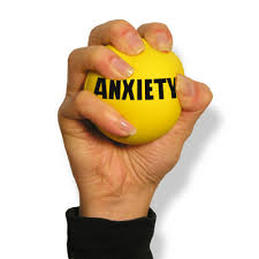 Ask yourself these questions: * What really happens if you’re not perfect? * Does any one get injured as a result? * Are your expectations actually measurable? * Are these your expectations yours or someone else’s? * How do your negative thoughts help you? * Do you become tense before a performance? * How would you like to feel different than you do? Mindfulness: Be aware of your physical responses to anxiety. Be aware of negative self talk. Write down both involuntary physical responses and negative self talk. Physical Responses: Acknowledge the physical responses and practice relaxation techniques such as deep breathing. Slowly inhale through the nose and slowly breathe out through the mouth. Practice keeping the air as steady as possible when breathing out. Notice the tension on your shoulders, neck and face start to diminish. Having a relaxed neck and throat is crucial in playing the trumpet. When playing trumpet or other brass instrument, it may be helpful to play as softly as possibly on lower notes while focusing only on the steadiness of the air. Negative self talk: Question the validity of the negative self talk. Are the negative things your saying about yourself actually true? What positive thoughts will you use to replace the negative thoughts. These negative thoughts serve no purpose and must be re-framed. Click image below to enlarge Disclaimer: This is blog entry is not for the purpose of diagnosis or treatment of a medical condition. Please consult your physician if you experience a more serious condition or symptoms.
The video below is a demonstration of the embouchure setting. The demonstration is from a “C” below the staff to a double “C”, then up to G above double C. The change between the notes is actually very little. The air speed is increased as the air is compressed and stays steady. During the entire process, the body remains relaxed as if only the low “C” was being played. If the body tenses up, the higher note will not sound because the air stream will be corrupted due to unnecessary restriction. The lip slurs demonstrate that although there is some movement, very little movement is required when changing notes. Steady air makes this possible. Once steady air is practiced, the body can gain perspective on how to react and become more efficient. Steady air is the necessary component for maintaining a relaxed state as well as efficiency. The relaxed feeling which occurs while playing in the lower register would be the same as the upper register. The mind would focus on a continual uninterrupted air stream rather than considering the notes as separate. Before attempting the change in pitch, practice long tones by holding a low C below the staff. Play the low C as soft as possible with steady air. After several minutes the body and brain should be in a relaxed state. Then attempt two change notes by one octave, then two, then 3. Above all, remember to remain relaxed. Please feel free to comment on this blog. 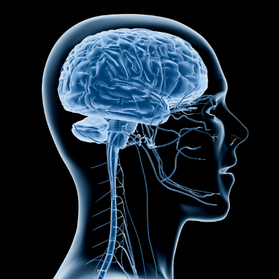 When practicing, most individuals play/practice until they get tired. This is with the belief that they will build endurance and strength, much like exercising or lifting weights. Musicians will play the entire exercise without resting and may feel fatigued. This causes the build up of lactic acid in the muscle tissues as well as the swelling of the tissues associated with trumpet playing. This causes the related muscles to become tense. The brain learns to relate playing the trumpet to being tense. This causes the body to react before playing the trumpet by what it learned from the previous experience of practicing until becoming tired. This is also known as muscle memory. So how does one practice without become tense and what are the benefits of this? The answer is playing for short periods of time and resting that same amount of time. For example - when playing a page from the Arban's book, would you try to play the entire page without resting? Or, would you play one line, rest equal amount of time, then proceed? The body and brain will react to the stimuli you present it with. If you practice how to play relaxed, you will get better at it. The interaction between the brain and the muscles associated with playing the trumpet react to the level of stress created each time you play. If the body can remain in a relaxed state, the performance will only become more efficient. This is also true for martial arts. A balance or relaxed state can be maintained at all times in time. Feel free to comment or ask questions on this blog. |
Archives
April 2020
Mark ZaussTrumpet player, Licensed clinical psychotherapist. Categories
All
|
||||||||||||||||||||||||||||||||||||||||||||||||||||||||
